 EN
EN
 PT
PT

Quick guide for teachers
PRIMARY SCHOOL
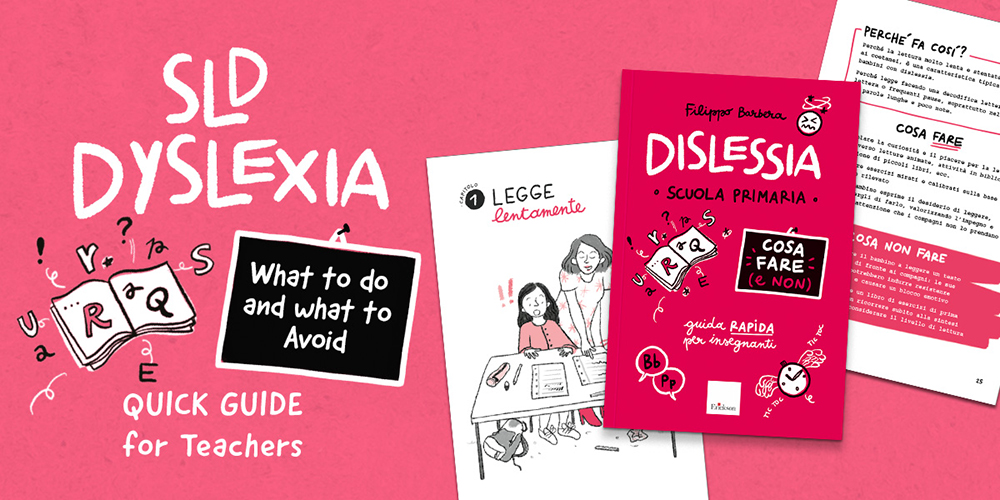
Dyslexia, the best known among the Specific Learning Disorders, hinders the normal process of interpreting the graphic signs with which words are represented in writing, in an individual with normal intelligence, without physical and psychological problems, who has had adequate learning opportunities.
In the style of a teacher training notebook, Dyslexia – What to Do (and What to Avoid) presents primary school teachers with “ready-to-use” instructions to successfully address 14 problematic situations and difficulties typical of dyslexia.
BOOK STRUCTURE AND CONTENTS
The book is divided into 14 chapters. Each one presents problematic situations or specific difficulties emerging in the classroom with children suffering from dyslexia:
The volume analyses needs and difficulties to be found in primary school pupils, which can also be observed, with the necessary adaptations, in lower secondary school students.
WHAT TO DO AND WHAT TO AVOID
The reason for the behavior is explained at the beginning of each chapter with a few short sentences (Why does he/she do that?), followed by simple and clear indications for the teacher on the attitudes and strategies to adopt (What to do) and to avoid (What not to do). Subsequently, further information and insights are provided, to contextualise the situation or difficulty presented (What to keep in mind) and tools and strategies on how to intervene regarding some crucial aspects (A few ideas on how to intervene). At the end of each chapter there is The expert advice, with practical suggestions to implement immediately.
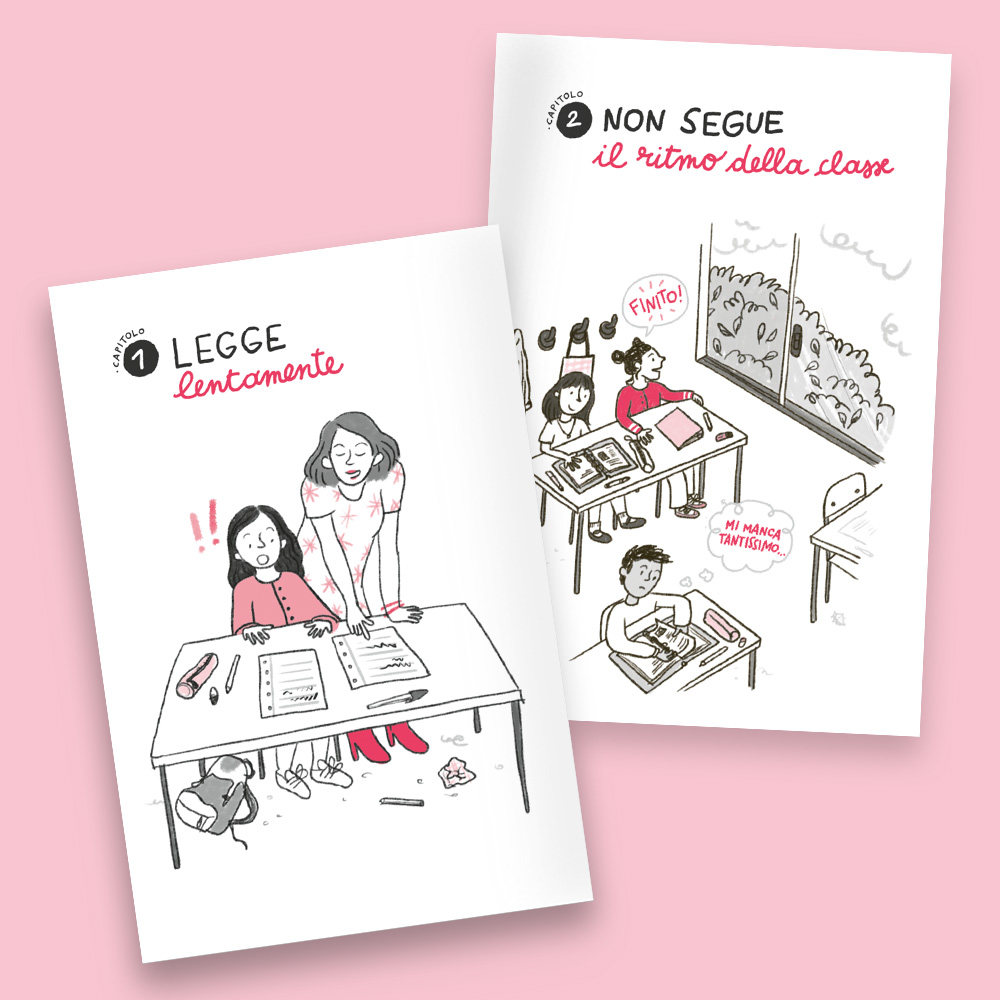
At the beginning of each chapter, a drawing introduces the analysed behaviour.
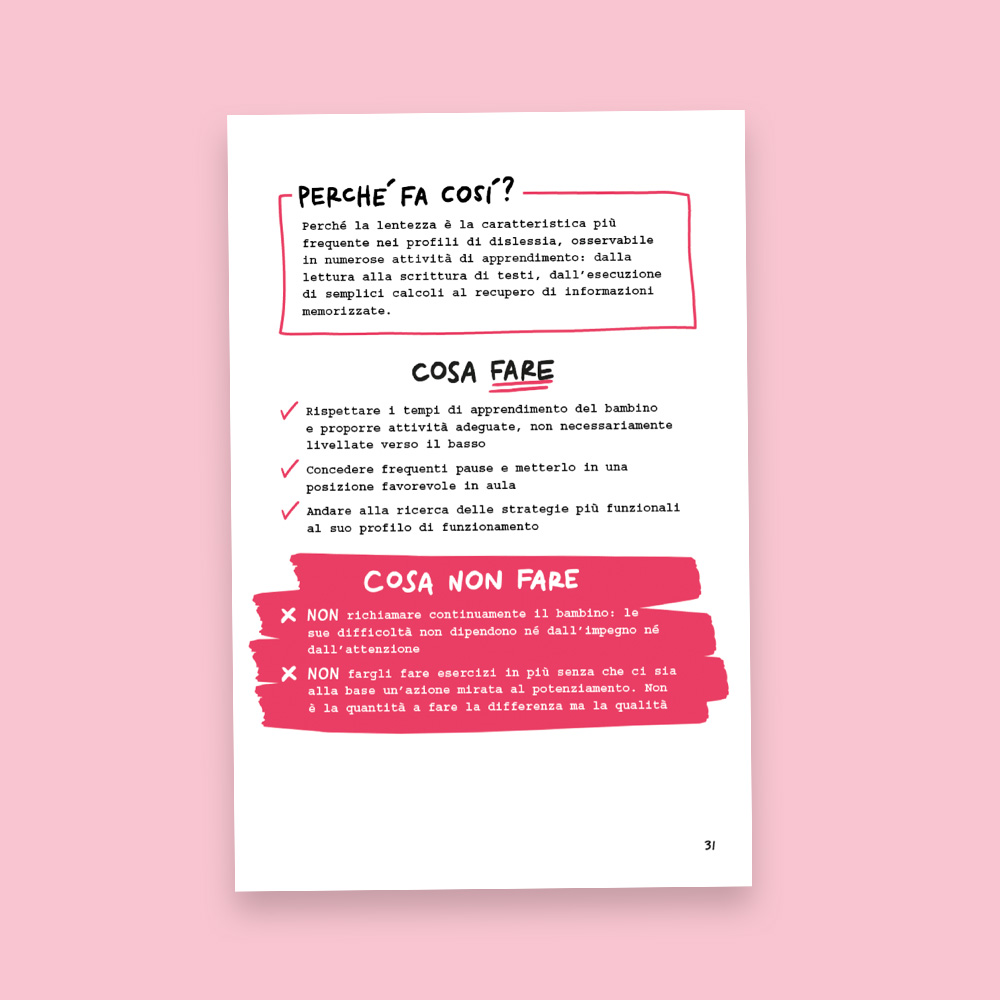
• Explanations of the problem behaviour being considered: Why does he/she do this?
• Brief and simple indications that can be useful to the teacher as a reference point for quickly deciding What to do and reflect on What to avoid.
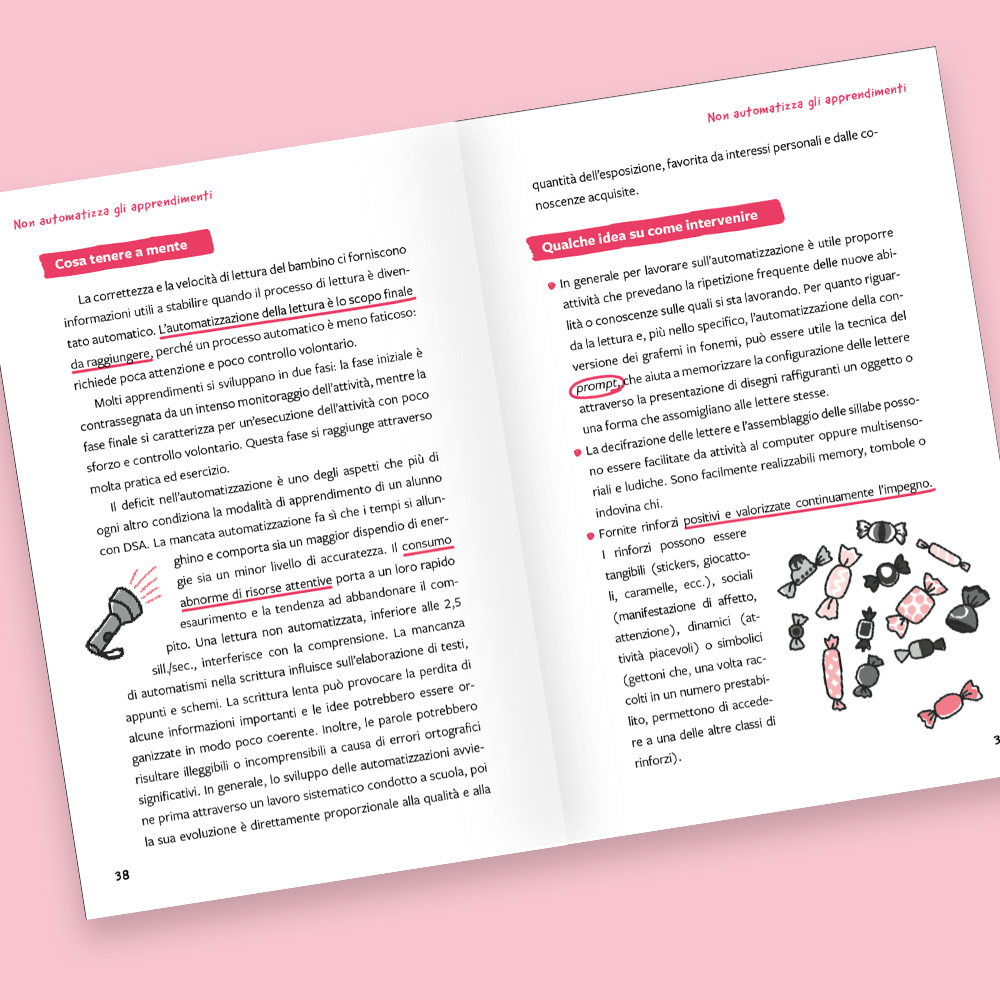
• A more in-depth description of the specific problem behaviourbeing worked on: Analysis of the problem behaviour.
• The tools and educational strategies to create the intervention: How to intervene.
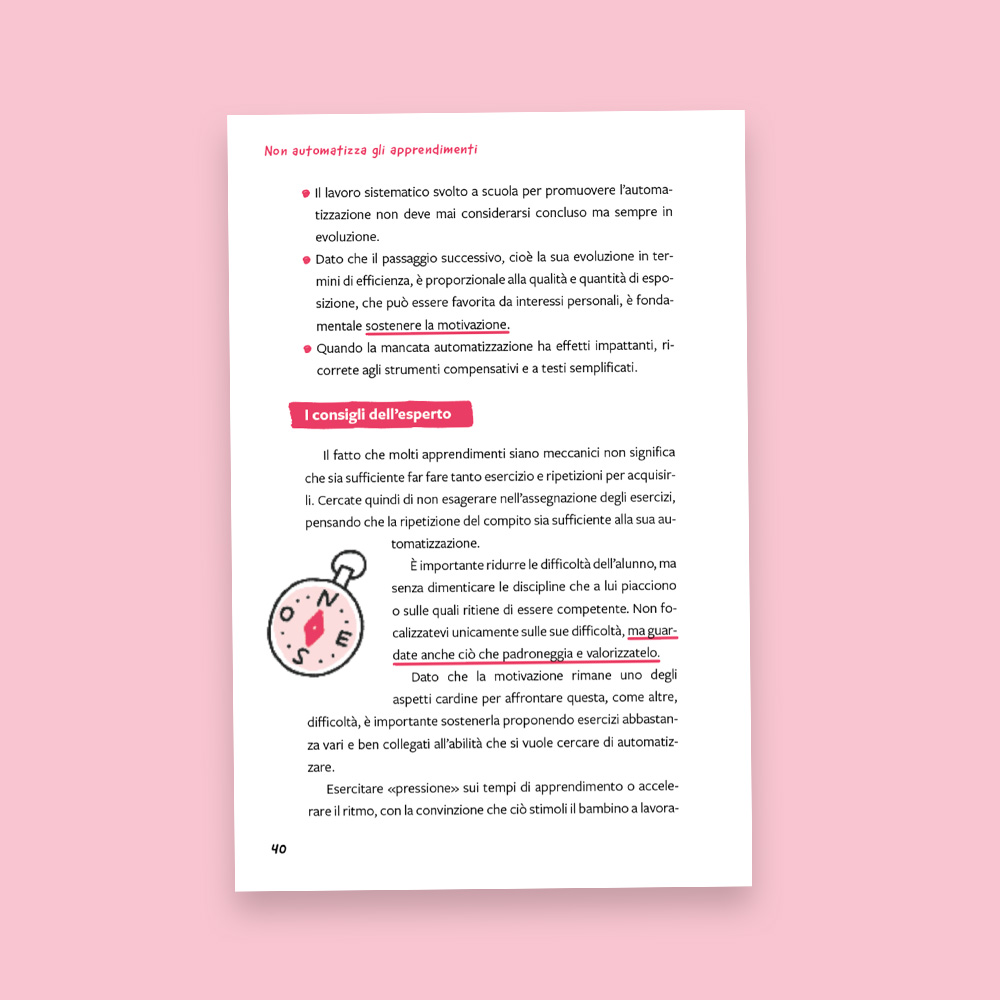
Each chapter closes with The expert advice: reflections to further understand and enrich the teacher’s “briefcase of educational tools”.
Leaf through some pages of volume which have been translated into English to facilitate your evaluation of the product.
THE AUTHOR
Filippo Barbera
A graduate in Primary Education and Psychology, and primary school teacher specialized in Psychopathology of learning and the Montessori method; trainer for teachers of all levels, carries out awareness-raising activities on Specific Learning Disorders.